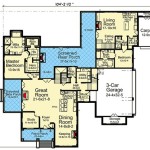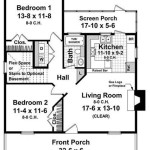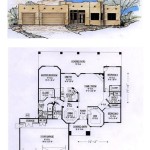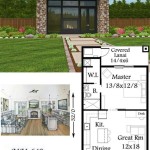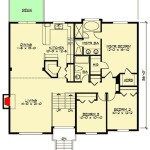Shipping Container Home Design Plans: A Comprehensive Guide
Shipping container home design plans are gaining significant traction as sustainable, cost-effective, and versatile alternatives to traditional construction methods. These plans detail the conversion of standard shipping containers into habitable dwellings, outlining structural modifications, interior layouts, utilities integration, and aesthetic enhancements. The appeal stems from the inherent durability and relatively low cost of used shipping containers, coupled with the potential for creative architectural design.
This article provides a comprehensive overview of essential considerations in developing shipping container home design plans. It explores key aspects ranging from structural integrity and code compliance to interior space planning and efficient energy utilization. A thorough understanding of these elements is crucial for achieving a successful and safe shipping container home project.
Structural Considerations and Modifications
The fundamental principle of shipping container home design lies in understanding and respecting the structural properties of the containers themselves. Shipping containers are designed to withstand significant vertical loads when stacked and lateral forces experienced during ocean transport. However, cutting openings for windows, doors, or larger spans can compromise this structural integrity.
Therefore, detailed structural analysis is paramount. A qualified structural engineer should evaluate the proposed modifications and determine the necessary reinforcements. Reinforcement generally involves welding steel supports around openings or adding internal steel framing to redistribute loads. The extent of reinforcement depends on the size of the openings, the stacking configuration (if any), and the local building codes.
Design plans should clearly specify the type and gauge of steel used for reinforcement, as well as the welding procedures. Proper welding is critical to ensure the strength and longevity of the modified container. Certified welders with experience in structural steel welding are essential for this aspect of the construction process.
Beyond opening reinforcements, design plans must address the foundation. Shipping container homes require a suitable foundation to prevent ground contact and ensure stability. Common foundation options include concrete slabs, piers, or strip footings. The choice depends on factors such as soil conditions, seismic activity, and the overall design of the home. The foundation design must be precisely engineered to adequately support the weight and dimensions of the container structure.
Furthermore, design plans should account for potential corrosion. Shipping containers are typically coated with protective layers to resist rust. However, these coatings can be damaged during modification or over time. Design plans should specify the application of appropriate rust-inhibiting primers and paints to exposed steel surfaces, both inside and outside the containers. Regular maintenance and inspection are also crucial for preventing corrosion and ensuring the long-term durability of the structure.
Code Compliance and Permitting
Shipping container homes are subject to the same building codes and regulations as conventional houses. These codes vary by location and cover aspects such as structural safety, fire resistance, energy efficiency, and accessibility. Obtaining the necessary permits is essential before commencing any construction work.
Design plans must demonstrate compliance with all applicable codes. This requires a thorough understanding of local zoning regulations, building codes, and environmental regulations. It is often advisable to consult with local building officials early in the design process to identify any specific requirements or potential challenges.
Fire resistance is a critical consideration. Shipping containers are made of steel, which is non-combustible. However, the interior finishes and insulation materials must meet fire safety standards. Design plans should specify the use of fire-rated materials for walls, ceilings, and floors. Smoke detectors and fire extinguishers are also mandatory.
Energy efficiency is another important aspect of code compliance. Shipping containers are essentially metal boxes, which can be prone to heat loss in cold climates and overheating in warm climates. Design plans must address this issue through proper insulation. Various insulation materials, such as spray foam, rigid foam boards, and batt insulation, can be used to improve thermal performance. The choice of insulation method depends on factors such as climate, budget, and desired R-value (thermal resistance).
Ventilation is also crucial for maintaining a healthy indoor environment and preventing moisture buildup. Design plans should incorporate adequate ventilation systems, such as windows, vents, or mechanical ventilation systems. Proper ventilation helps to regulate temperature, reduce humidity, and improve air quality.
Accessibility requirements, as outlined in the Americans with Disabilities Act (ADA) and other accessibility standards, must also be considered. Design plans should ensure that the home is accessible to individuals with disabilities, including features such as ramps, wider doorways, and accessible bathrooms.
Submitting detailed and comprehensive design plans is crucial for obtaining building permits. The plans should include structural drawings, architectural drawings, electrical plans, plumbing plans, and mechanical plans. All plans should be prepared by qualified professionals and comply with all applicable codes and regulations.
Interior Space Planning and Utilities Integration
Effective interior space planning is essential for maximizing the functionality and livability of a shipping container home. The relatively narrow width of standard shipping containers (typically around 8 feet) presents unique design challenges. Careful consideration must be given to the layout of rooms, the placement of furniture, and the integration of utilities.
Design plans should clearly define the layout of each room, including dimensions, door and window locations, and the placement of fixtures and appliances. Open-plan layouts can help to create a sense of spaciousness. Strategically placed windows and skylights can maximize natural light and ventilation.
Storage is often a concern in shipping container homes. Design plans should incorporate ample storage solutions, such as built-in cabinets, shelves, and closets. Utilizing vertical space is particularly important in maximizing storage capacity.
Utilities integration includes the design and installation of electrical, plumbing, and HVAC (heating, ventilation, and air conditioning) systems. Electrical plans should specify the location of outlets, switches, and lighting fixtures. Plumbing plans should detail the water supply, drainage, and waste disposal systems. HVAC plans should outline the heating and cooling system, including ductwork and ventilation.
Connecting to existing utility services can be a straightforward process in some cases. However, in remote or off-grid locations, alternative solutions may be required. Design plans may need to incorporate solar panels, wind turbines, or generators for electricity generation. Water storage tanks or rainwater harvesting systems may be necessary for water supply. Septic systems or composting toilets may be required for waste disposal.
Insulation plays a critical role in maintaining comfortable interior temperatures and reducing energy consumption. Design plans should specify the type and thickness of insulation to be used in walls, ceilings, and floors. Proper insulation helps to regulate temperature, reduce noise, and improve energy efficiency.
The interior finishes of a shipping container home can be customized to suit individual preferences. Design plans should specify the materials to be used for walls, floors, and ceilings. Common choices include drywall, wood paneling, and concrete. The choice of materials can significantly impact the overall aesthetic and feel of the home.

Container Home Floor Plans

Photo 11 Of 19 In 9 Container Home Floor Plans That Maximize

Ship Container House Plans 3 Containers Home Concept Plan Homes

Container Home Floor Plans Structures Layouts More Ideas

Container Home Plans Blueprints Housing

Container Home Floor Plans

Container Home Floor Plans Types Examples Considerations Cedreo

Container Home Floor Plans Structures Layouts More Ideas

Container Home Plans Cmg Containers

Container Home Floor Plan

